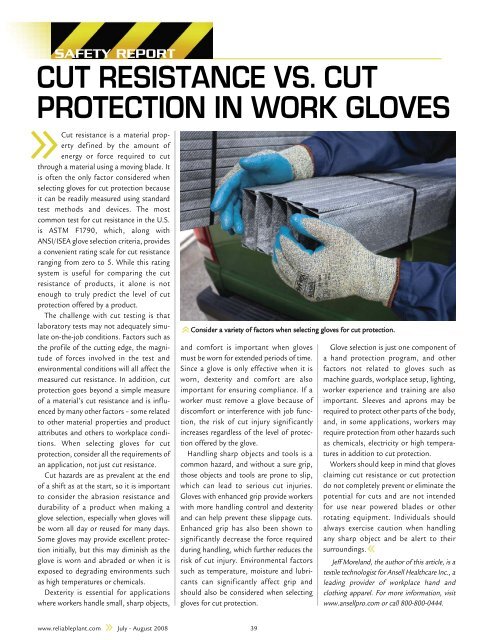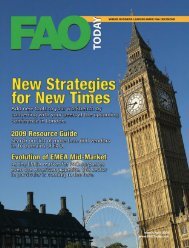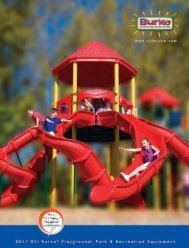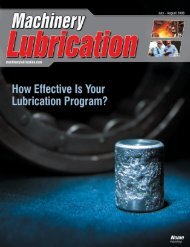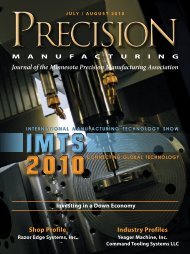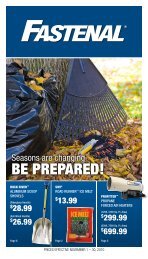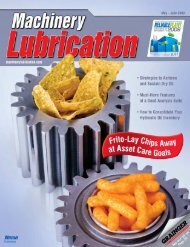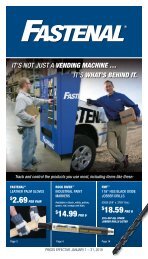Reliable Plant July August 2008
Reliable Plant July August 2008
Reliable Plant July August 2008
Create successful ePaper yourself
Turn your PDF publications into a flip-book with our unique Google optimized e-Paper software.
SAFETY REPORT<br />
CUT RESISTANCE VS. CUT<br />
PROTECTION IN WORK GLOVES<br />
Cut resistance is a material property<br />
defined by the amount of<br />
energy or force required to cut<br />
through a material using a moving blade. It<br />
is often the only factor considered when<br />
selecting gloves for cut protection because<br />
it can be readily measured using standard<br />
test methods and devices. The most<br />
common test for cut resistance in the U.S.<br />
is ASTM F1790, which, along with<br />
ANSI/ISEA glove selection criteria, provides<br />
a convenient rating scale for cut resistance<br />
ranging from zero to 5. While this rating<br />
system is useful for comparing the cut<br />
resistance of products, it alone is not<br />
enough to truly predict the level of cut<br />
protection offered by a product.<br />
The challenge with cut testing is that<br />
laboratory tests may not adequately simulate<br />
on-the-job conditions. Factors such as<br />
the profile of the cutting edge, the magnitude<br />
of forces involved in the test and<br />
environmental conditions will all affect the<br />
measured cut resistance. In addition, cut<br />
protection goes beyond a simple measure<br />
of a material’s cut resistance and is influenced<br />
by many other factors – some related<br />
to other material properties and product<br />
attributes and others to workplace conditions.<br />
When selecting gloves for cut<br />
protection, consider all the requirements of<br />
an application, not just cut resistance.<br />
Cut hazards are as prevalent at the end<br />
of a shift as at the start, so it is important<br />
to consider the abrasion resistance and<br />
durability of a product when making a<br />
glove selection, especially when gloves will<br />
be worn all day or reused for many days.<br />
Some gloves may provide excellent protection<br />
initially, but this may diminish as the<br />
glove is worn and abraded or when it is<br />
exposed to degrading environments such<br />
as high temperatures or chemicals.<br />
Dexterity is essential for applications<br />
where workers handle small, sharp objects,<br />
Consider a variety of factors when selecting gloves for cut protection.<br />
and comfort is important when gloves<br />
must be worn for extended periods of time.<br />
Since a glove is only effective when it is<br />
worn, dexterity and comfort are also<br />
important for ensuring compliance. If a<br />
worker must remove a glove because of<br />
discomfort or interference with job function,<br />
the risk of cut injury significantly<br />
increases regardless of the level of protection<br />
offered by the glove.<br />
Handling sharp objects and tools is a<br />
common hazard, and without a sure grip,<br />
those objects and tools are prone to slip,<br />
which can lead to serious cut injuries.<br />
Gloves with enhanced grip provide workers<br />
with more handling control and dexterity<br />
and can help prevent these slippage cuts.<br />
Enhanced grip has also been shown to<br />
significantly decrease the force required<br />
during handling, which further reduces the<br />
risk of cut injury. Environmental factors<br />
such as temperature, moisture and lubricants<br />
can significantly affect grip and<br />
should also be considered when selecting<br />
gloves for cut protection.<br />
Glove selection is just one component of<br />
a hand protection program, and other<br />
factors not related to gloves such as<br />
machine guards, workplace setup, lighting,<br />
worker experience and training are also<br />
important. Sleeves and aprons may be<br />
required to protect other parts of the body,<br />
and, in some applications, workers may<br />
require protection from other hazards such<br />
as chemicals, electricity or high temperatures<br />
in addition to cut protection.<br />
Workers should keep in mind that gloves<br />
claiming cut resistance or cut protection<br />
do not completely prevent or eliminate the<br />
potential for cuts and are not intended<br />
for use near powered blades or other<br />
rotating equipment. Individuals should<br />
always exercise caution when handling<br />
any sharp object and be alert to their<br />
surroundings.<br />
Jeff Moreland, the author of this article, is a<br />
textile technologist for Ansell Healthcare Inc., a<br />
leading provider of workplace hand and<br />
clothing apparel. For more information, visit<br />
www.ansellpro.com or call 800-800-0444.<br />
www.reliableplant.com <strong>July</strong> - <strong>August</strong> <strong>2008</strong> 39


